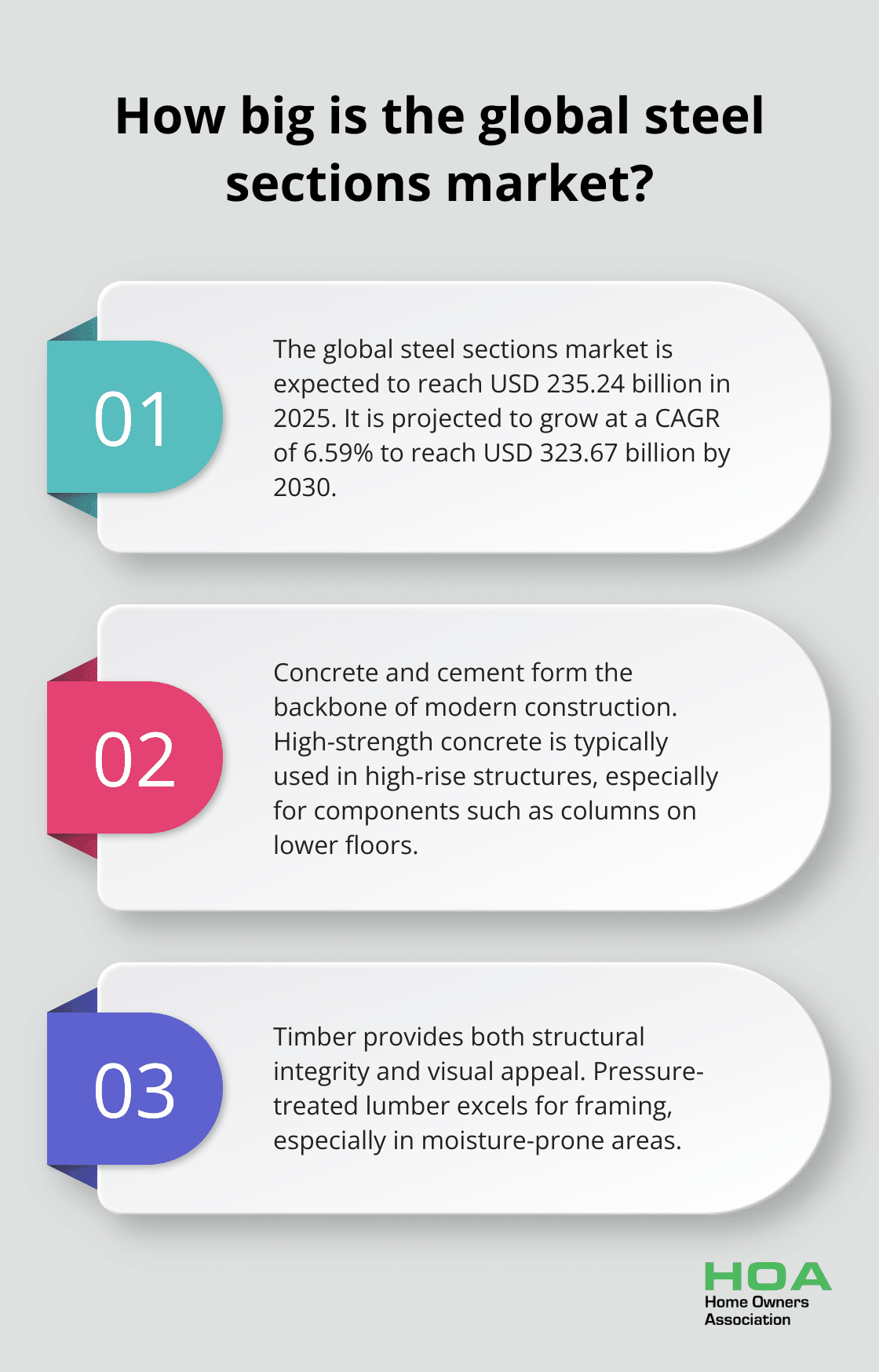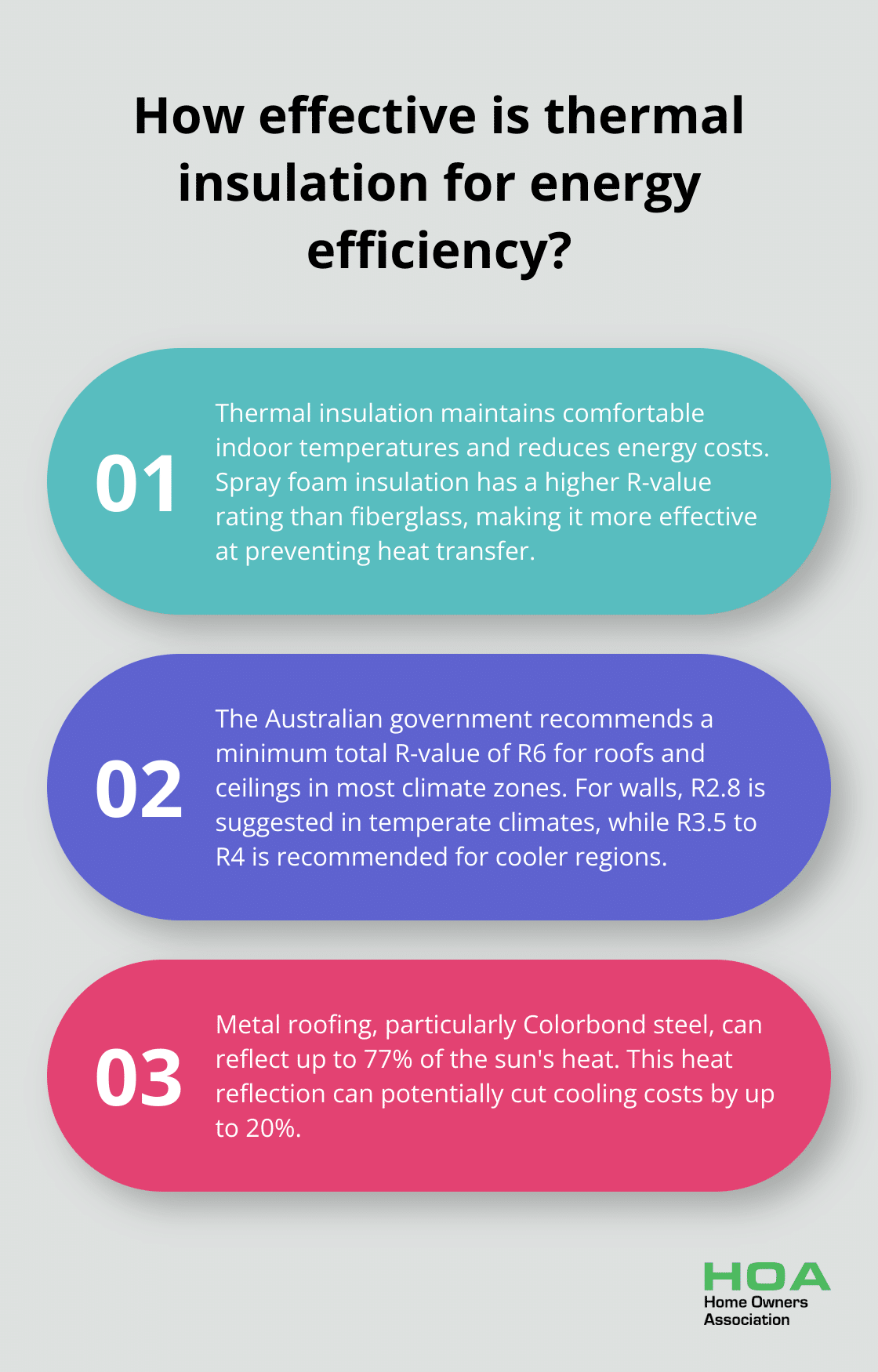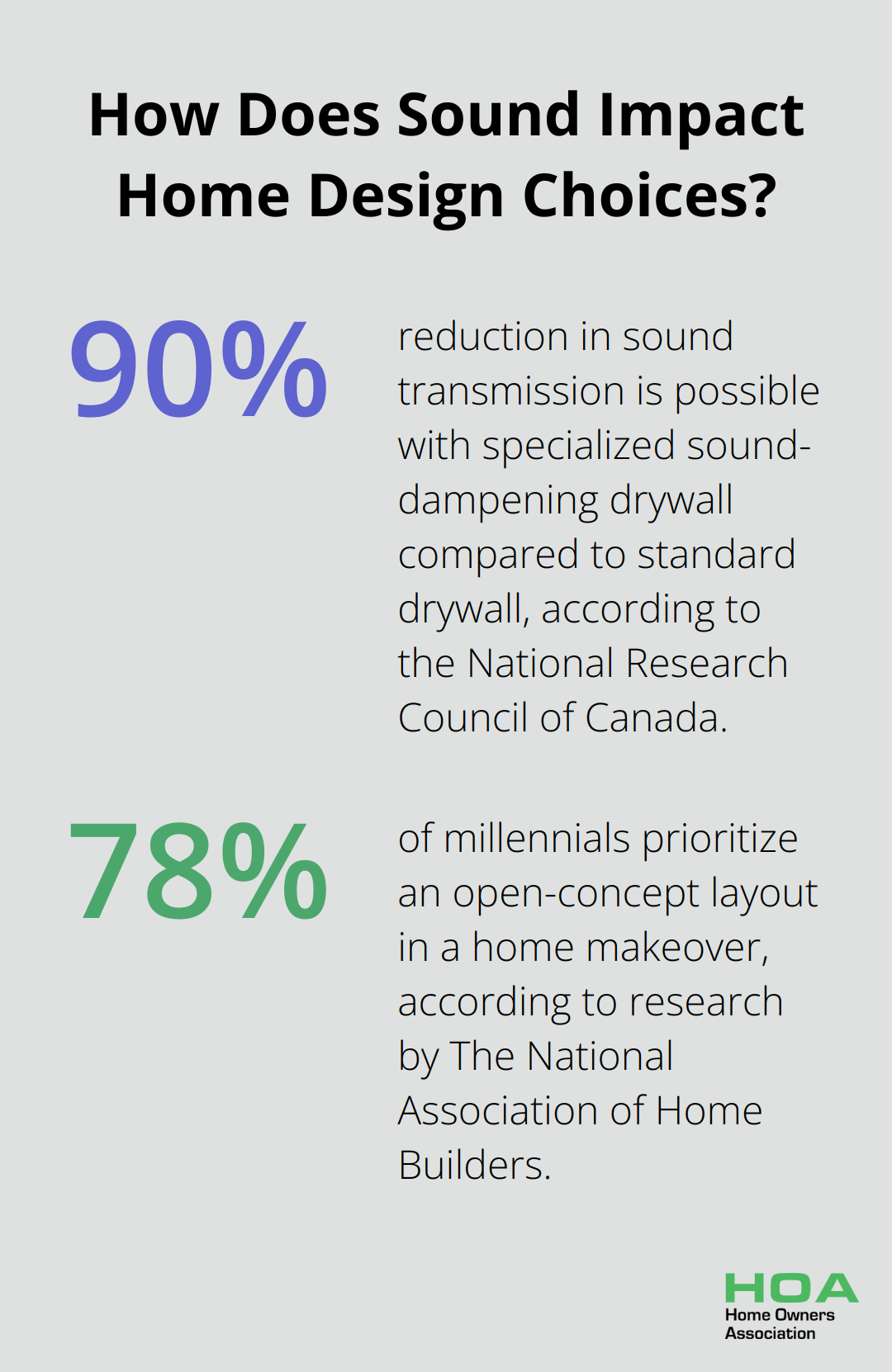
At Home Owners Association, we understand the importance of having the right building supplies and materials for your next project. Whether you’re renovating your home or starting a new construction, choosing quality materials is essential for success.
In this guide, we’ll explore the key categories of building supplies you’ll need, from foundational materials to finishing touches. We’ll also provide tips on selecting and sourcing these essential items effectively.
Core Building Materials: The Foundation of Your Project
Concrete and Cement: Solid Groundwork
Concrete and cement products form the backbone of modern construction. High-strength concrete is typically used in the erection of high-rise structures, especially for components such as columns on lower floors. Ready-mix concrete speeds up on-site work, while specialized mixes address specific needs such as rapid setting or enhanced weather resistance.

For smaller projects, bagged cement offers versatility. Choose the right type-Portland cement for general use, or masonry cement for brick and stonework. Additives like fly ash or silica fume can improve concrete’s properties and sustainability.
Timber: Strength Meets Aesthetics
Timber provides both structural integrity and visual appeal. Pressure-treated lumber excels for framing, especially in moisture-prone areas. Engineered wood products (such as LVL and glulam beams) offer superior strength for longer spans.
Select timber based on grade and moisture content. Kiln-dried lumber with moisture content below 19% suits interior use to prevent warping. For outdoor projects, naturally durable species like cedar or treated pine resist decay and insect damage.
Steel and Metal: Reinforcing Excellence
Steel components enhance structural stability. Reinforcing bars (rebar) improve concrete’s tensile strength, while structural steel beams and columns form the skeleton of larger buildings. Metal framing provides a termite-resistant alternative to wood in residential projects.
Galvanized or stainless steel options offer superior corrosion resistance, especially in coastal areas. The global steel sections market is expected to reach USD 235.24 billion in 2025 and grow at a CAGR of 6.59% to reach USD 323.67 billion by 2030, underscoring its continued importance in construction.
Masonry: Timeless Durability and Style
Bricks and masonry supplies offer fire resistance and classic aesthetic appeal. Clay bricks remain popular, but concrete blocks provide cost-effective alternatives for larger structures. When selecting bricks, consider compressive strength and water absorption rate-factors that affect longevity and performance.
Pre-mixed mortar ensures consistent quality, while site-mixed options allow customization. The choice of mortar type (N, S, or M) depends on the project’s structural requirements and exposure conditions.
As we move forward, let’s explore how to protect these foundational elements from the elements themselves. The next section will cover essential materials for insulation and weather protection, ensuring your structure stands strong against nature’s challenges.
Shielding Your Home: Insulation and Weather Protection
At Home Owners Association, we understand the importance of protecting your home from the elements. This chapter explores essential materials for insulation and weather protection, which ensure your structure remains comfortable and resilient year-round.
Thermal Insulation: Boosting Energy Efficiency
The right thermal insulation maintains comfortable indoor temperatures and reduces energy costs. Fiberglass batts offer a cost-effective and easy-to-install option. For superior performance, spray foam insulation has a higher R-value rating than fiberglass, making it more effective at preventing heat transfer from inside or outside.

The Australian government’s Your Home initiative suggests a minimum total R-value of R6 for roofs and ceilings in most climate zones. For walls, try to reach R2.8 in temperate climates, while R3.5 to R4 suits cooler regions.
Waterproofing: Moisture Prevention
Effective waterproofing prevents water damage and mold growth. Bitumen-based membranes like SOPRALENE FLAM 180, an SBS-modified bitumen waterproofing membrane, are designed for roofing and below-grade applications. These come in sheet form or as liquids, with the latter providing seamless coverage around complex shapes.
For wet areas like bathrooms, flexible membrane systems work best. Some products allow tiling to start just 4 hours after application, which speeds up renovation timelines significantly.
Roofing Materials: Top-Tier Protection
Your roofing choice impacts both aesthetics and functionality. Metal roofing (particularly Colorbond steel) has gained popularity in Australia due to its durability and heat-reflective properties. It can reflect up to 77% of the sun’s heat, potentially cutting cooling costs by up to 20%.
Concrete tiles offer excellent durability and thermal mass for those preferring a traditional look. Modern options combine the benefits of concrete with sleek, contemporary appearances.
Your local climate should influence your roofing material selection. In bushfire-prone areas, look for materials with a high BAL (Bushfire Attack Level) rating. Some steel products suit use in BAL-FZ (Flame Zone) areas, the highest bushfire risk category.
Sealants and Adhesives: Unsung Construction Heroes
Quality sealants and adhesives play a vital role in your project. Polyurethane sealants offer excellent adhesion and flexibility for exterior use. Some products provide up to 600% elongation, which accommodates building movement without cracking.
Silicone sealants (especially mold-resistant formulations) prove indispensable for interior applications and wet areas. Advanced products incorporate Biocide technology, which actively inhibits mold growth for up to 5 years.
Careful selection and proper application of these insulation and weather protection materials create a home that’s comfortable, energy-efficient, and durable. Quality materials lead to significant savings in energy costs and future repairs. Next, we’ll explore the finishing touches that bring your project to life, focusing on interior supplies that blend functionality with aesthetic appeal.
Transforming Interiors: Essential Finishing Supplies
At Home Owners Association, we know that finishing touches transform a project. This chapter explores key materials that will turn your space from a construction site into a polished, livable environment.
Drywall: The Canvas for Your Home
Drywall forms the basis of most interior walls and ceilings. Select drywall based on the specific needs of each room. Moisture-resistant gypsum board is essential for bathrooms and laundry areas. These boards contain silicone additives that reduce water absorption by up to 5% compared to standard drywall.

For areas that require enhanced soundproofing (such as home offices or bedrooms), use sound-dampening drywall. These specialized panels can reduce sound transmission by up to 90% compared to standard drywall, according to data from the National Research Council of Canada.
Paint: More Than Just Color
The right paint selection goes beyond aesthetics. Low-VOC paints have become increasingly popular due to their minimal environmental impact and reduced odor. These paints emit minimal toxins, hence improving indoor air quality. They also produce less odour, making them more comfortable to use.
For high-traffic areas, choose washable, scrubbable paints. These formulations can withstand up to 2,000 scrubs before showing signs of wear, according to tests conducted by the Paint Quality Institute.
Don’t skip the crucial priming step. A quality primer can increase paint adhesion by up to 30%, which leads to a longer-lasting finish. For new drywall, use a PVA (polyvinyl acetate) primer to seal the porous surface effectively.
Flooring: The Foundation of Style and Durability
Flooring choices significantly impact both the look and functionality of a space. Engineered hardwood offers the beauty of solid wood with enhanced stability. These floors can withstand humidity fluctuations of up to 30% without warping, which makes them suitable for a wider range of environments.
For high-traffic areas or homes with pets, consider luxury vinyl planks (LVP). Modern LVP can withstand up to 20 years of normal wear and tear, with some premium lines offering warranties of up to 30 years.
If you want eco-friendly options, bamboo flooring is worth considering. It reaches maturity in just 3-5 years (compared to 20-120 years for traditional hardwoods), which makes it a rapidly renewable resource.
Trim and Moulding: The Finishing Touch
Trim and moulding add character and polish to any room. Consider both material and style when selecting these elements. PVC trim offers excellent moisture resistance and can be painted to match any decor. It’s particularly suitable for bathrooms and exterior applications, where it can withstand exposure to moisture without rotting or warping.
For a classic look, oak remains a popular choice for interior trim. Its pronounced grain pattern adds visual interest, and it takes stain beautifully. However, oak trim can increase your project cost by 20-30% compared to pine alternatives.
Crown moulding can add perceived value to a home. However, it’s important to note that millennials strongly prefer open concepts. Research conducted by The National Association of Home Builders shows that 78% of millennials prioritize an open-concept layout in a home makeover.
Final Thoughts
Quality building supplies and materials form the foundation of successful construction and renovation projects. High-grade components enhance durability, efficiency, and aesthetics, leading to long-term benefits such as reduced maintenance costs and increased property value. Partnering with reputable suppliers ensures access to superior products and expert advice, which can significantly impact project outcomes.

At Home Owners Association, we offer our Melbourne members trade pricing and discounts on a wide range of construction materials. Our team provides personalized guidance to help you make informed decisions about your building supplies. This support aims to streamline your project and ensure compliance with local regulations.
Careful selection of building supplies and materials sets the stage for a smoother construction process and more satisfying results. Whether you plan a small renovation or a major build, choosing the right materials represents your first step towards creating your ideal home. Our expert team stands ready to assist you in sourcing the best supplies for your next project.





